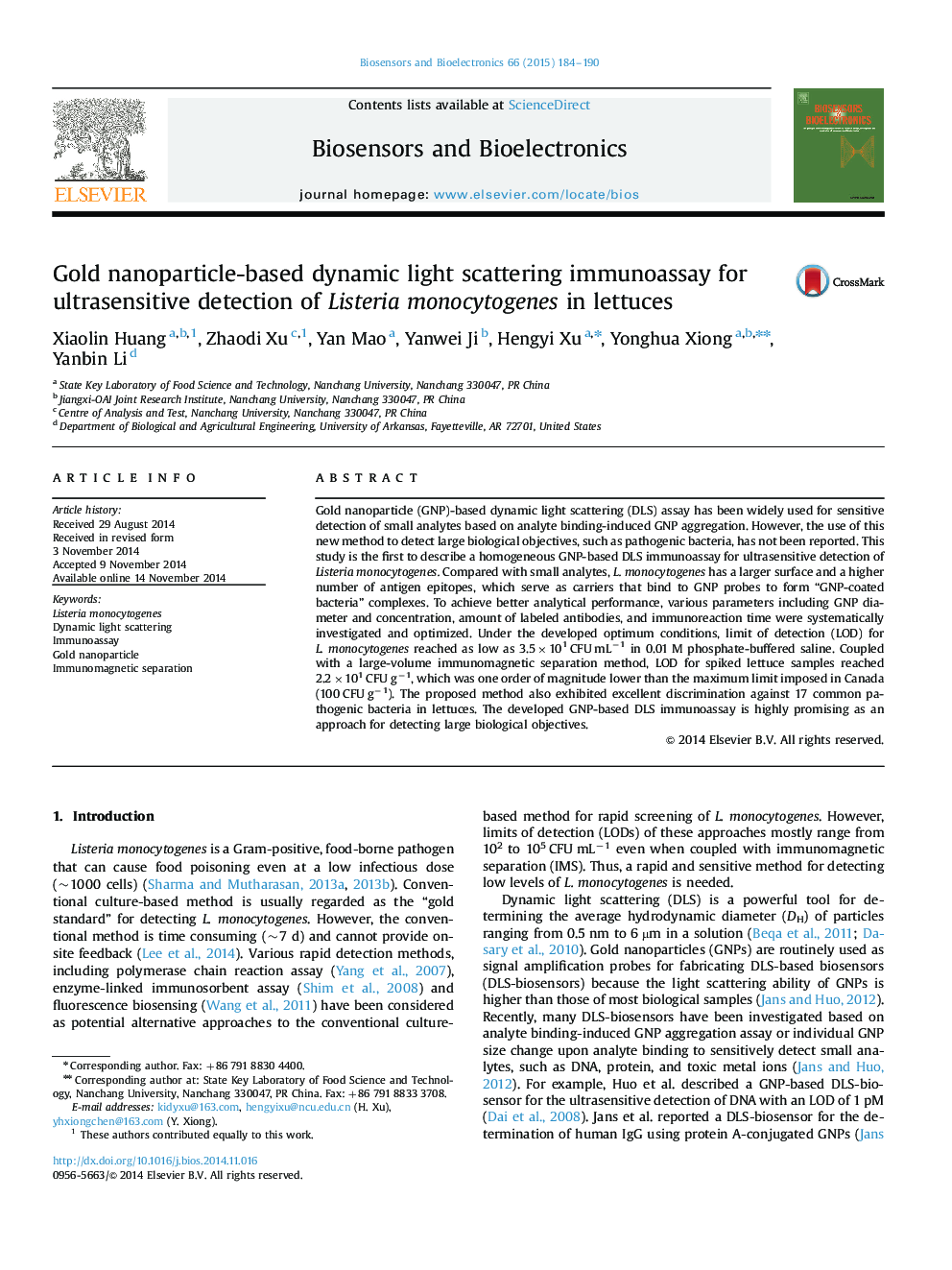| Article ID | Journal | Published Year | Pages | File Type |
|---|---|---|---|---|
| 7232556 | Biosensors and Bioelectronics | 2015 | 7 Pages |
Abstract
Gold nanoparticle (GNP)-based dynamic light scattering (DLS) assay has been widely used for sensitive detection of small analytes based on analyte binding-induced GNP aggregation. However, the use of this new method to detect large biological objectives, such as pathogenic bacteria, has not been reported. This study is the first to describe a homogeneous GNP-based DLS immunoassay for ultrasensitive detection of Listeria monocytogenes. Compared with small analytes, L. monocytogenes has a larger surface and a higher number of antigen epitopes, which serve as carriers that bind to GNP probes to form “GNP-coated bacteria” complexes. To achieve better analytical performance, various parameters including GNP diameter and concentration, amount of labeled antibodies, and immunoreaction time were systematically investigated and optimized. Under the developed optimum conditions, limit of detection (LOD) for L. monocytogenes reached as low as 3.5Ã101Â CFUÂ mLâ1 in 0.01Â M phosphate-buffered saline. Coupled with a large-volume immunomagnetic separation method, LOD for spiked lettuce samples reached 2.2Ã101Â CFUÂ gâ1, which was one order of magnitude lower than the maximum limit imposed in Canada (100Â CFUÂ gâ1). The proposed method also exhibited excellent discrimination against 17 common pathogenic bacteria in lettuces. The developed GNP-based DLS immunoassay is highly promising as an approach for detecting large biological objectives.
Keywords
Related Topics
Physical Sciences and Engineering
Chemistry
Analytical Chemistry
Authors
Xiaolin Huang, Zhaodi Xu, Yan Mao, Yanwei Ji, Hengyi Xu, Yonghua Xiong, Yanbin Li,
